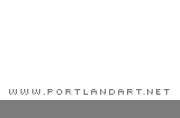
|
||
|
Portland art blog + news + exhibition reviews + galleries + contemporary northwest art
|
||
Terry Toedtemeier's Skies It has been a little over
five years since photographer and curator Terry Toedtemeier passed away and
though many of us still think about the man we haven't had much chance to take
in his full legacy as an important photographer. PDX Contemporary's current
show, Skies gives us all a tantalizing preview, which will lead up to a full retrospective
at the Tacoma Art Museum. Though the title Skies, might make one think first of
Stieglitz’s groundbreaking Equivalents series the show is more rooted in
landscape and in particular, the way Toedtemeier engaged other landscape photographers
as if they were part of the atmosphere in which he breathed as the Portland Art
Museum's curator of photography.
In fact, only one photo seems to be chiefly of the sky, which makes sense since Toedtemeier's photos are never just about the subject in view. Instead, they infer and reference the mechanisms of geology, art history and human nature as a part of nature... never separate. 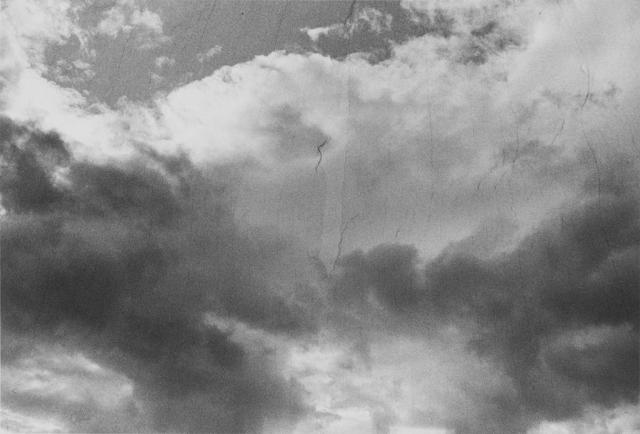 Untitled (Screen at Golf Course Near Hillsboro) Thus, the exhibition's standout image of "skies" as seen through the torn netting of a golf course isn't just that... I remember him describing the netting as like runs in fishnet stockings or film grain. The point being that the filters revealed the way points of pigment coalesce on our rods and cones, which are then reassembled as an image. In fact, it is a fantastic image... every bit about the way we see, process and experience as a Robert Irwin or James Turrell piece. Here the clouds filter sunlight through them, the netting filters the cloud and we sense the cameras role. Then the process of printing leaves traces of all those filters to produce a flat image. Get very close and it seems like fog... To practice landscape in either painting or photography is to engage the zen inducing ubiquity of nature's self-generating fractal formulas and a different concept of time, which is vaster than a human lifespan. It attracts extreme personalities, romantics and scientists alike because it offers both a kind of expeditionary challenge and a reprieve from the self that cannot be denied or procrastinated upon, merely confronted and negotiated. Like those classic John Ford westerns or Caspar David Freidrich paintings, nature always gets the last word and its language silence. Conversely, if portraiture is the subjective study of the self, landscape's sublime is the study of the absolute other in response. Both genres often tell far more in what they indirectly reveal, such as the painter/photographer's position and brush/lens choice, than the actual subject matter. As partially documentary, both genres are subject to heavy manipulation and filters in the production of their mimicry translated through technique. Thus, landscape is always a translation or a history of filters with the photographer's framing choices being just one of them. Also, the choice is either to study the partial or to aggregate a compelling fiction (check out Arcy's related essay on Nature and Art). In essence, landscape asks a photographer to be a supposedly impartial scientist or a dramatist engaged in an elaborate stagecraft. 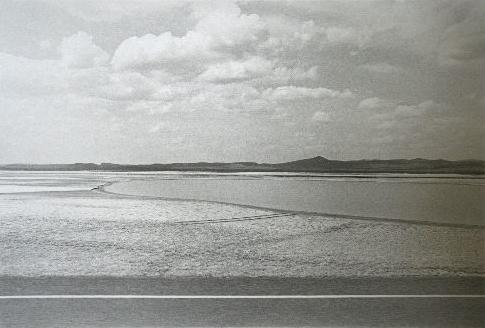 Alvord Lake Toedtemeier did both but generally turned down the drama in the mix. For example, there is the photograph, Alvord Lake. It isn't a high contrast drama study like Ansel Adams popularized. Instead, the dried lakebed and the tracks through it resemble the white and darker gray trails in the sky. It isn’t pristine and it isn’t corrupted... it simply draws an equivalency in the sky and earth. There is an immediacy too since all of the photographs were shot out of a car. That's why the sky as a subject is so philosophically compelling here. Though skies are perhaps the most dramatic of environmental phenomena... the examples shown here present them as in a very subdued manner in conversation with the land around them rather than as bombastic divas. In other words it is a negotiated system, which Toedtemeier consistently reveals in a series of visual motifs. The success of Toedtemeier's work often highlights fleeting synchronicities in land and sky revealing a the cog like system that is nature... simultaneously presenting both the silence and the gears of the scenery he captured. 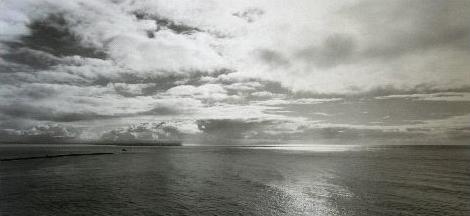 Terry Toedtemeier's The Mouth Of The Columbia River 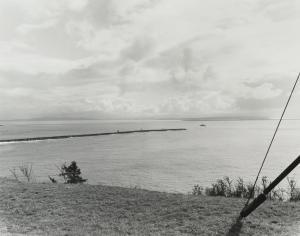 Robert Adams' The Columbia River and the Pacific Ocean For example in The Mouth Of The Columbia River the skies Toedtemeier photographed seem mostly quiescent with just one dark subtle shadow just to the left of the mouth off in the distance. The mouth is called The Graveyard of the Pacific and the tiny ship in the photo is heading out into the ocean. It is a calm crossing showing the small ship waiting for the correct time to cross the often huge standing waves the mouth creates... one big enough for large ships to “surf” on. Here we also see how Toedtemeier's work is often in conversation with the great Robert Adams, whose image of a similar scene shows a ship fighting against the current with a mowed lawn and manmade structures in the foreground. The differences are very noticable, Toedtemeier doesn't treat the jetty as a man made incursion like Adams does... almost as a kind of colonization. Instead, it is just part of the daily traverse like a trailhead for a hiker. The danger isn't ignored but it isn't played up either. Instead, Toedtemeier chose to present a slightly portentous every day moment, not a dramatic man vs. nature one. Instead of polarities, Toedtemeier presents equivalents, slight dissonances and visual sympathies. When others would photograph the “graveyards of the Pacific Toedtemeier chose to photograph the infinity of a local seaman's backyard or the sea with the obligatory ship. It isnt played up as being heroic or even a struggle, it's a living and a habit rather than an existential drama. The effect is dispassionate but by selecting the frame with the diminished boat and subtle shadow, Toedtemeier shows the constant negotiation that must occur here. It isn't man vs nature or Nature showing whose boss like Robert Adams did in his depiction. It is more akin to William Eggleston's mute Middle American structures than Robert Adam's morality . What is more, Toedtemeier actually spoke to me of these factors in this particular image.... years before I finally got to see it on the gallery walls. 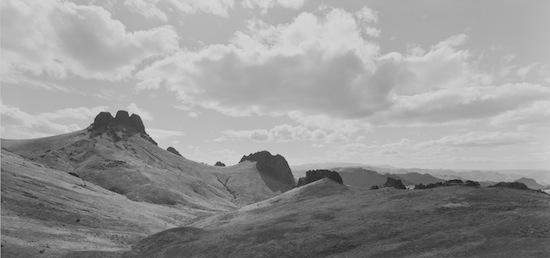 Three Finger Rock and Dike Wall, Malheur County, 1999 As PAM's legendary curator of photography Toedtemeier was both presenter and collector of a public memory of landscape (best expressed through his last show Wild Beauty). Yet there is another side, as a personality-type Terry was an adventurer, constantly going on expeditions but in presentation he tended towards the more subtle dry and reserved with a lot of sweep. It gives his work tension and an inner smolder, you feel him indirectly through the very active geology and environmental forces at work. Thus, we sense the dramatist in large bodies of work rather than individual prints (many photographers are the opposite). In other words, he liked to study a subject in depth rather than flashy moments that would play well in commercial stock photograph. Even his photos of lava tend to be reserved, such as Three Finger Rock and Dike Wall, Malheur County, 1999. In it the exposed lava reaches up just like the cumulus clouds above it, yet he doesn't make the scene a stark study in light and dark... but one of corollary activity that seems related but cant be... except for the same laws of physics (convection heat rising etc). 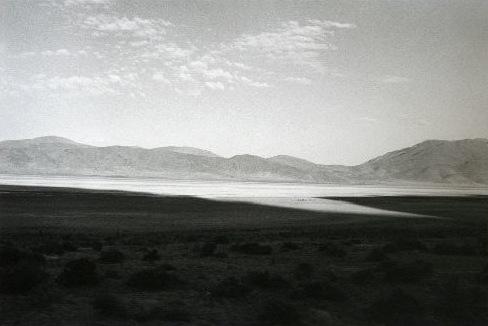 Steen's Mountain Shadow, Alvord Desert, Oregon One of my favorite images in the show is Steen's Mountain Shadow, Alvord Desert, Oregon. In a very direct way Toedtemeier lets the shadow paint the foreground darker... revealing the position of the sun behind Steen's Mountain and thus giving the viewer an implied 360 degree experience. It takes a deft photographer to reveal a world beyond the frame and the fluffy white clouds create a sympathetic "v" form to the foreground shadow while the whole site takes place in a valley. Thus, Toedtemeier photographs 3 valleys in one frame. Compared once again to Robert Adams who similarly showed the shadow of the gap between a semi truck's load and its cab in a foreground configuration, Toedtemeier implicates the entire landscape as a system. Instead of Adam's moral struggle to tow and move man made objects in the landscape, I think Toedetemeier's work made peace with daily survival and simply sought to catch the gears of the universe turn within an image. Overall, drama measures everything in human terms and Oregon's Alvord desert is simply vaster than one can depict in any frame.... though indirectly Toedtemeier does it and I remember him speaking of these moves and synchronicities... almost like the way ancient Greek rhapsodies would discuss the meaning of eagles in the sky. 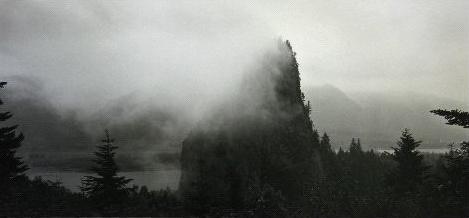 Unknown (Beacon Rock) Other works like Beacon Rock show a similar sense of humor, with the pillar of basalt half obscured in water vapor. At one time the Army Corps of Engineers had thought about blowing the rock up for jetty material and perhaps Toedtemeier is partly imagining one of the world's largest rocks not being there. Or perhaps is it much of a beacon if it is shrouded? Toedtemeier would have been aware of all these things and enjoyed the relationships. 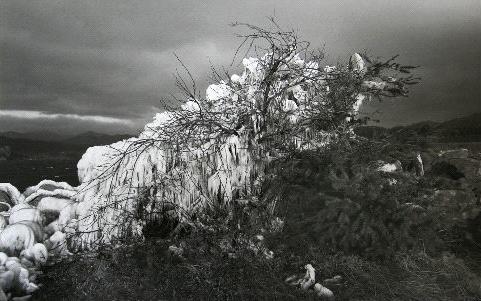 Frozen Spray, Government Cove Jetty 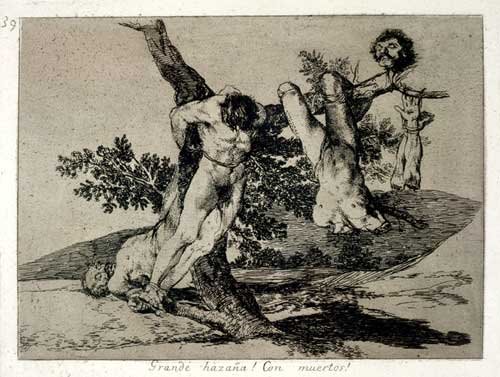 Goya's A Heroic Feat! Perhaps the most dramatic work in Skies is Frozen Spray, Government Cove Jetty. Literally, the action of the frozen water lies draped across a tree like Goya's famous print A heroic feat! With dead men! But of course that is just a coincidence? It can just as easily be appreciated for the way it shows how the spray starts as landscape, is splashed up to become sky and transformed into hanging ice. It reveals a process, just as making a photo does... if you know what to look for. 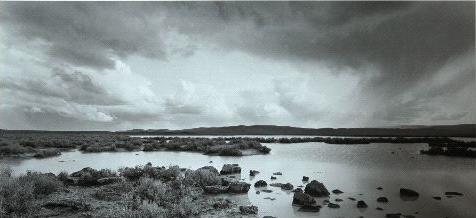 Palomino Lake, Malheur Co., Oregon (Breaking Light) You can find similar relationships in Palomino Lake, Malheur Co., Oregon (Breaking Light). Here that breaking light in the sky highlights the dappled rocks below creating a palomino's horse's speckled coat pattern in the water. It's a simple synchronicity but as you look at photograph after photograph the intention comes through. There are no accidents, just good photographers. As a photographer Toedtemeier was an intense but generally selfless negotiator positioned between the earth and a finished print. His enthusiasm for landscape was absolutely sincere as a true geology and a photography geek. In this exhibition, Skies, we see his subtlety... because frequently the skies are far less active than the landscape beneath them. I believe he was showing how they each worked in different scales of time almost like two gears... one large one small, whose cog teeth turned one another. In that way it is fitting that we get to get to experience the photos after the man whose life's work was too much to fit into his own lifetime. Through March 1st Posted by Jeff Jahn on February 26, 2014 at 7:08 | Comments (0) Comments Post a comment Thanks for signing in, . Now you can comment. (sign out)
(If you haven't left a comment here before, you may need to be approved by
the site owner before your comment will appear. Until then, it won't appear
on the entry. Thanks for waiting.)
|
| s p o n s o r s |
 |
 |
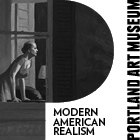 |
 |
 |
 |
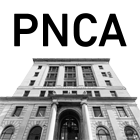 |
 |
 |
 |
 |
 |
 |
 |
 |
 |

|
Site Design: Jennifer Armbrust | • | Site Development: Philippe Blanc & Katherine Bovee | |
